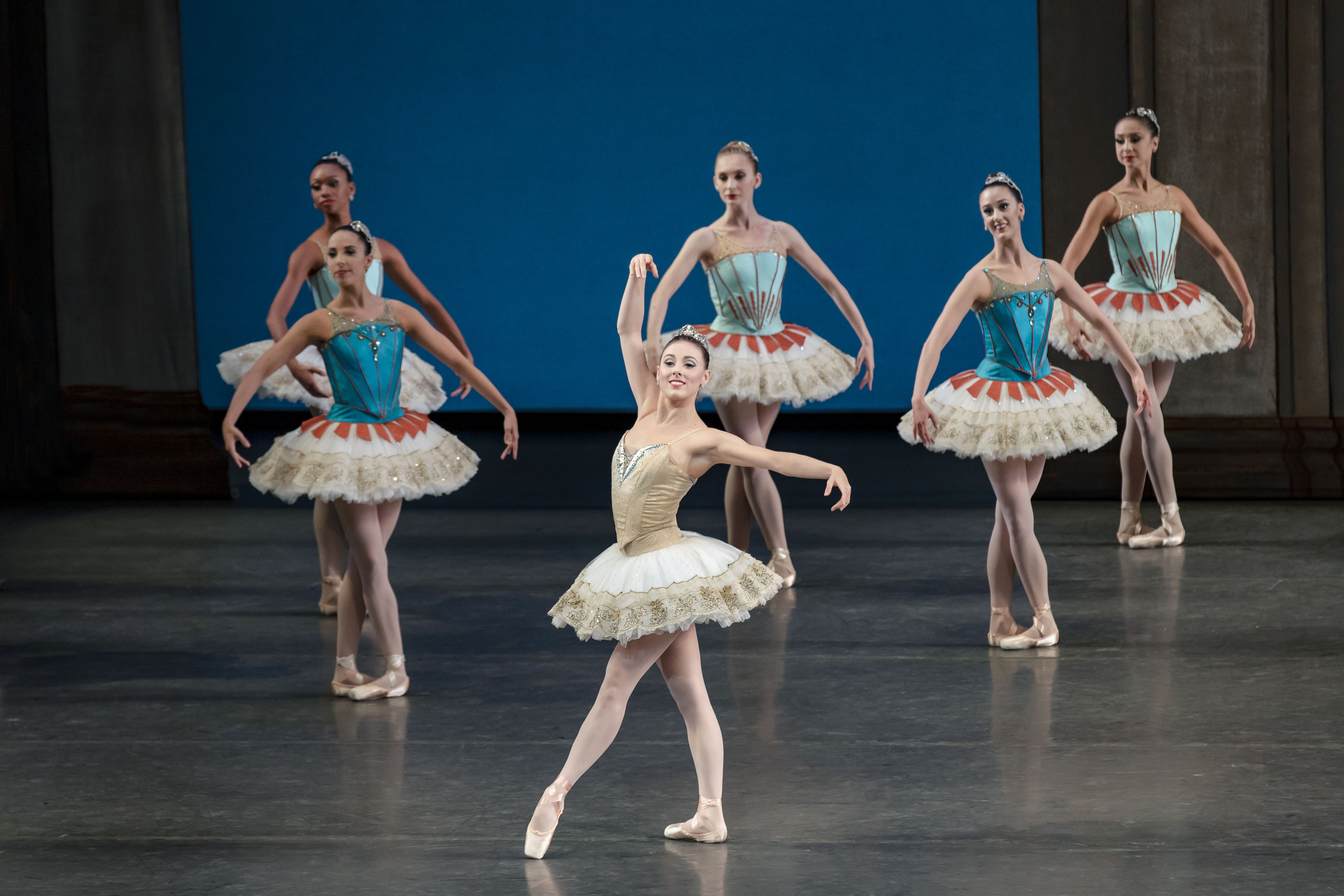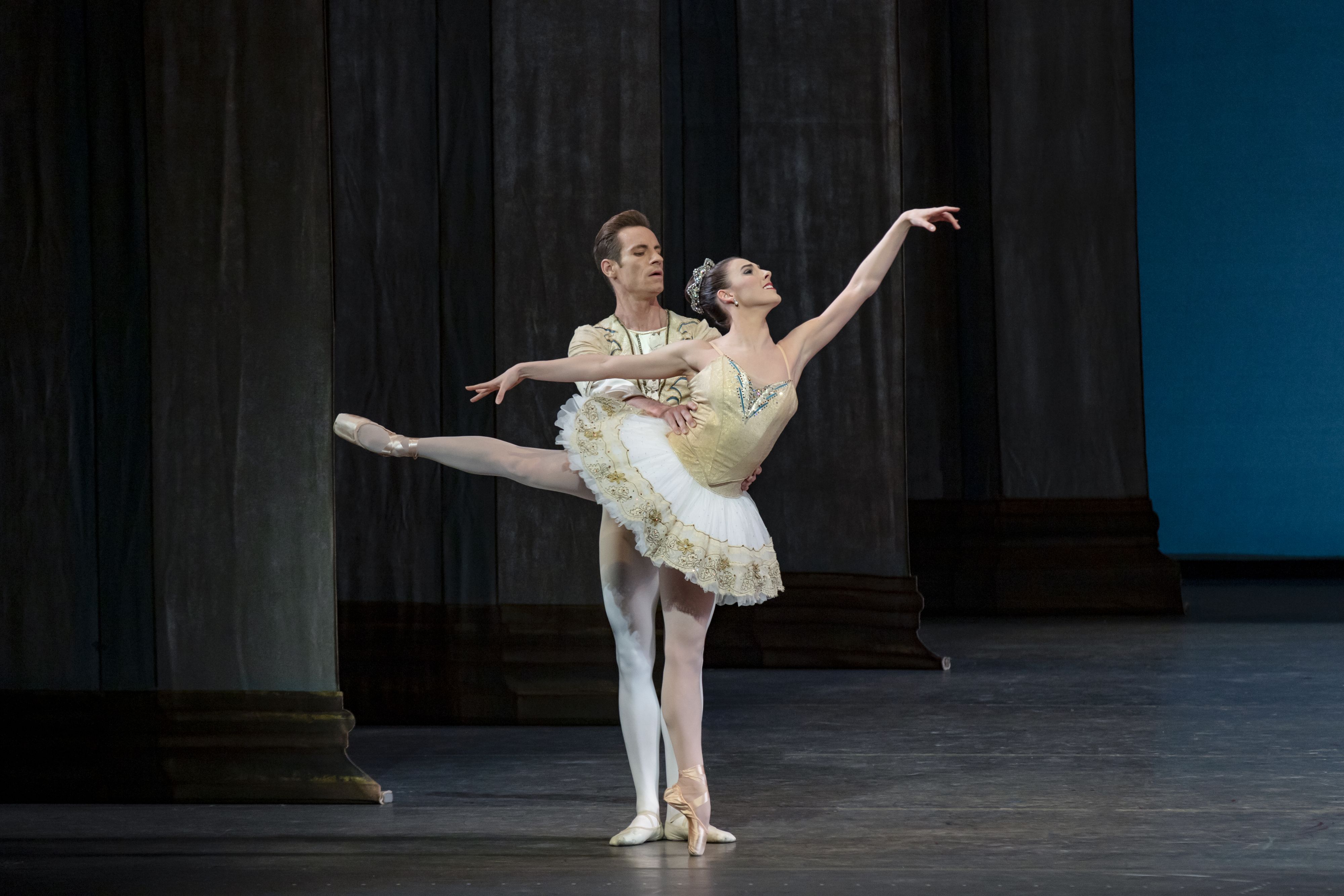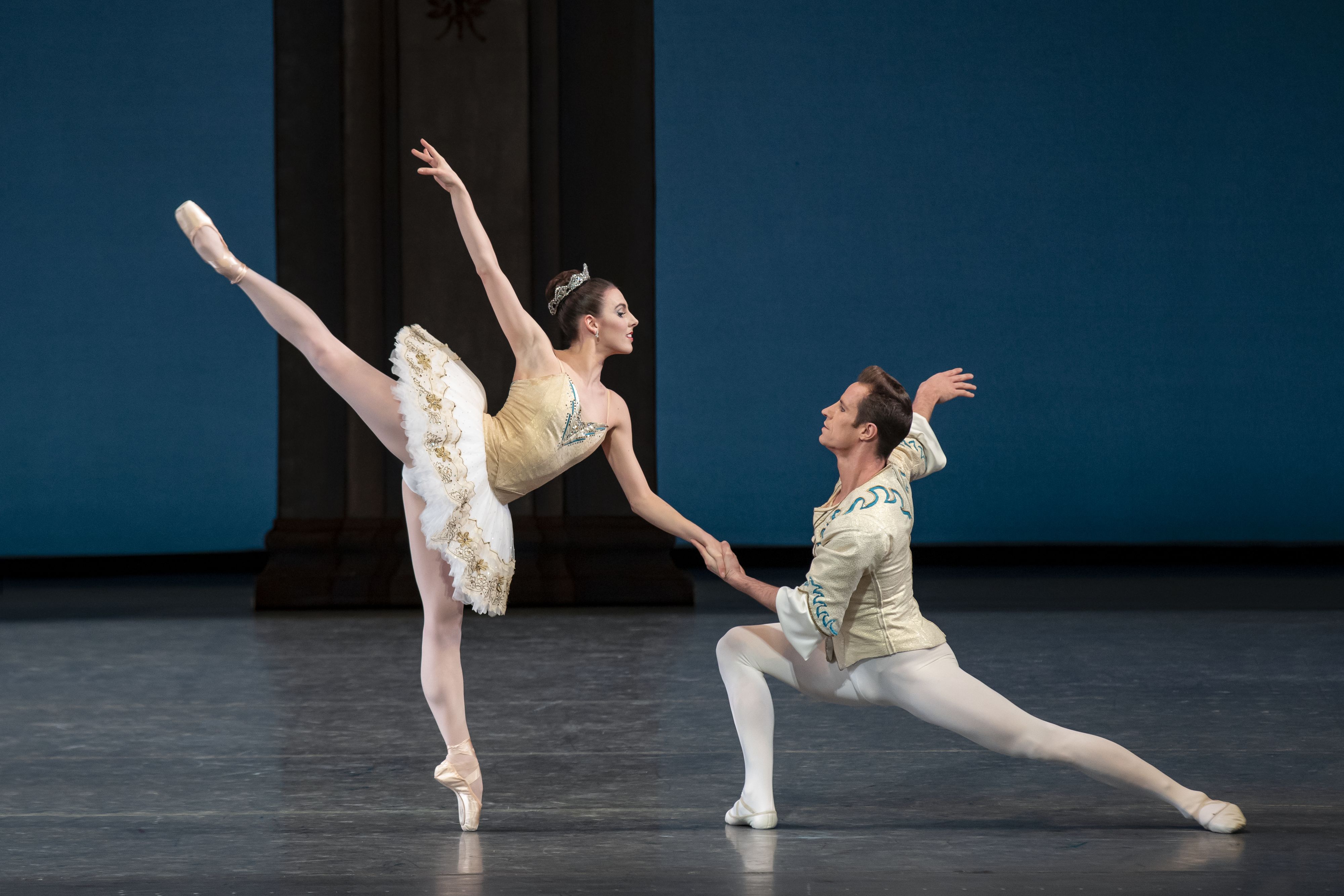
A Dance Ballet
On Theme and Variations, Balanchine's Classical Masterwork
, February 26, 2021
In his Complete Stories of the Great Ballets, George Balanchine describes his Theme and Variations as “a dance ballet”—a description seemingly so simple and redundant as to be without meaning, but in the context of the choreographer’s body of work, one that indicates plenty. A plotless piece set to one of Tschaikovsky’s orchestral suites, it exemplifies Balanchine’s approach to his own background, the music of one of his most beloved composers, and classical ballet. Replete with technical virtuosity that demands bravura performances from not only its lead couple but all 24 soloists and corps dancers, Theme and Variations is, in a sense, a work beyond words.
Balanchine began training as a dancer at the age of nine at the Imperial Ballet School of St. Petersburg; before graduating in 1921, he would become well-versed in the idiom of classical dance, exemplified at the time by the work of Marius Petipa. Often considered Petipa’s heir, Balanchine himself referred to the 19th-century, French-Russian choreographer as his “spiritual father.” The traditional movement vocabulary advanced in Petipa’s oeuvre served as the foundation for the singular neo-classical language Balanchine would go on to develop, finding its first profound iteration in 1928’s Apollo. Though choreographed nearly two decades later, the footwork in Theme and Variations lies somewhere between these two vernaculars, with a more explicit sense of homage incorporated into its distinctively Balanchine expression.
According to Balanchine, Theme and Variations was intended to “evoke that great period in classical dancing when Russian ballet flourished with the aid of Tschaikovsky’s music,” and as with all of his ballets, the master composer’s 
Tschaikovsky was present for the Suite’s premiere in 1885, and though he’d predicted the work would be well-received, he was greatly affected by the audience’s rapturous response; writing again to von Meck: “I have never had such a triumph. I saw the whole audience was moved, and grateful to me. These moments are the finest adornments of an artist’s life.” Of the composition’s four movements, Élégie, Valse mélancolique, Scherzo, and Tema con variazioni, the last—equal in length to the first three movements combined—would become a frequently-referenced, much-beloved work on its own, and often performed as such. And, it would serve, excerpted, as the score for Balanchine’s 1947 ballet.
Commissioned by the Ballet Theatre (re-christened American Ballet Theatre in 1957), Balanchine set Theme and 
In a contemporary review of Theme and Variations’ debut for the New York Herald Tribune, dance critic Walter Terry called it the “greatest classical ballet of our time,” writing,
...let it not be supposed that the choreographer has simply rejuvenated an old and revered balletic ancestor; [he] invigorates traditional movements by forming them into new sequences, by giving them fresh accents and muscular intensities, by extracting for dance coloring the hues of the music being employed, and by freely using movements of his own design. His use of interlacing patterns, of complex body weavings for groups is as much a part of the ballet’s elegance and beauty as is the glittering processional which brings the work to a close in a fabulously beautiful and spectacular burst of imperial pomp.
Theme and Variations was an immediate success on its Ballet Theatre premiere, and following its 1960 NYCB debut on then-Principal Dancers Edward Villella and Violette Verdy, has remained a repertory mainstay with the Company. In 1970, Balanchine returned to the music, incorporating Theme and Variations into a ballet set to the entirety of the suite as Tschaikovsky Suite No. 3. Today, much like its score, the work is performed both in full and, more frequently, as the fourth movement alone.
“Theme and Variations is my all time favorite ballet,” says Principal Dancer Tiler Peck, a recent interpreter of the lead. “It is said to be one of the most difficult roles for a ballerina to dance. I was first taught this role by [former Principal Dancer] Merrill Ashley, and I remember spending hours in the studio, just the two of us, working on the technical demands of the ballet. It is a beast—a challenge both physically and mentally. Over the years, I have worked on it with [former Principal Dancer] Heather Watts and really feel like I have found my way and my own voice in the role. I must say, I am not one to love “tutu” ballets because that is where I feel most out of my comfort zone, but something about the marriage of Balanchine’s choreography with the score just feels like home to me, and unlike any other classical tutu ballet. I can honestly say I look forward to dancing Theme every single time.”

“My last performance of Theme was with [former Principal Dancer] Joaquin De Luz during his retirement performance,” she recalls. “I remember standing behind the curtain in our places for the ballet to start and I turned to him and started getting teary. I couldn’t believe he was the first person I ever danced Theme and Variations with in my debut, and this would now be our last time dancing it together. I remember saying to him, 'I better pull myself together because there is way too much difficult dancing to get through before we can get emotional!' I will never forget that performance.”
The classical, made undeniably modern, and uniquely his own: Theme and Variations represents the continuation of Balanchine’s forebears as only he would have it. Each new generation makes its indelible mark on this timeless masterpiece, joining the 400-year-old traditions of the art form’s history to the present day stage.



